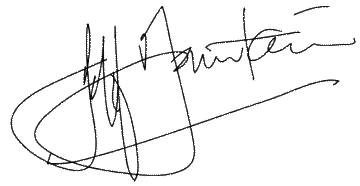Strains of harp music wafted into my waking consciousness early this morning. Through half-opened eyes, I became aware of lush green fields and trees, and mountains enveloped in clouds. Perhaps I was in Heaven already?
But no. This was the same bed we had been sleeping in for the past two weeks. Admittedly, I had described this place last week as about as good as it gets here on this planet. And the view of the Bernese Alps and Lake Thun out my window remained as enchanting as ever.
But the Summer School of European Studies was now over until next year. Everyone had gone home-except Romkje and myself. We were staying on for a few days rest.
Meanwhile other guests had moved in over the weekend-a class of harpists preparing for a concert later in the week. Hence the heavenly wake-up call!
As this is the start of some vacation time, this will be the last ww before I return from YWAM leadership meetings in Asia, early in September. In order to start relaxing, I’m going to share again a story I have featured before. As they say, if a story is worth telling once, it’s worth repeating. For the tale of the Theban Martyrs is little-known but is one of the most thought-provoking events we came across in our recent Heritage trip.
Revolt
Seventeen centuries ago, a legion of Egyptian soldiers conscripted into the Roman army had been sent to Switzerland to help quell the rebellious Helvetian Celts inhabiting the region around the Montreaux end of Lake Geneva. Maximian, co-emperor of Rome, had called for a legion of 6600 men from Thebes, in Upper Egypt. He assumed that as distant foreigners with no shared language and culture, the Egyptians would not be tempted to side with the rebels.
Various versions of the amazing story that unfolded have developed over the ages, the earliest coming to us from Saint Eucher, the bishop of Lyons, who died in 494 AD, almost exactly two centuries after the event. He wrote that after the revolt was quelled, Maximian issued an order that the whole army should join offering sacrifices for the Roman gods for the success of their mission. The order included killing Christians (probably as a sacrifice to the Roman gods). The Theban Legion dared to refuse to obey. Maurice, their commander after whom this town was named, and his men flatly refused to kill the Christians. They themselves were all Coptic Christians.
So Maximian ordered the ‘decimation’ of the Thebans – one in ten was put to death. But when the Thebans stood their ground. Maximian was enraged. The bishop wrote: “Like a savage beast, he ordered the second decimation to be carried out, intending that the remainder should be compelled to do what they hitherto refused. Yet they still maintained their resolve.”
Finally the emperor ordered the execution of the remaining members of the legion – more than 5000 of his own soldiers – for refusing to kill their fellow believers!
Maurice’s speech to the emperor has been handed down to us by church tradition. Here it is in part:
Emperor, we are your soldiers, but we are above all servants of God.
We owe you military obedience, but we owe Him innocence.
We receive from you the wages of our labor, from Him we have received life.
We cannot deny God our Creator and Lord, and your Creator also, whether you wish it or not.
We have always fought for justice, respect, and the lives of the innocent; that was our recompense for the dangers we faced.
We have fought in faithfulness; but how can we preserve this faithfulness toward you, if we refuse it toward our God?
We have first of all sworn an oath to God, and secondly to the Emperor.
Know that our second oath is meaningless, if we violate the first.
You order us to put Christians to death. Search no further, here we are!
We confess our faith: ‘We believe in God, Father and Creator of all things; we believe in His Son Jesus Christ, our God.’
Christians we declare ourselves to be; we cannot persecute other Christians.
We have seen our comrades slain with the sword, we do not weep for them but rather rejoice at their honour.
Neither this, nor any other provocation have tempted us to revolt.
Behold, we have arms in our hands, but we do not resist, because we would rather die innocent than live by any sin.
Praise
The town of St Maurice stands today near the site of martyrdom, the Theban camp. In 515, King Sigismod of the Burgondes charged local monks to maintain the Laus perennis, or perpetual praise to the Lord, in an abbey built nearby. Daily mass has been observed in this abbey for 1492 years! We happened to enter the abbey just in time to witness this oldest continuous daily ritual possibly in the whole of Europe.
The cult of St. Maurice spread far and wide across medieval Europe, principally along the Rhine River in Switzerland and in northern Italy. Over seventy European towns carry the name of St. Maurice. Also known as St. Moritz, St. Mauritius and St. Maurits, St. Maurice was a significant figure in Germanic iconography. His image is still found on many works today in cathedrals and museums throughout Germany. Over 650 foundations bear his name in France alone. Five cathedrals, innumerable churches, chapels and altars are consecrated in his name all over Europe. Both Mauritania and Mauritius are named after this Egyptian saint.
Few remember the name of the emperor who ordered the killing.
Till September then,
Jeff Fountain
Till next week,
